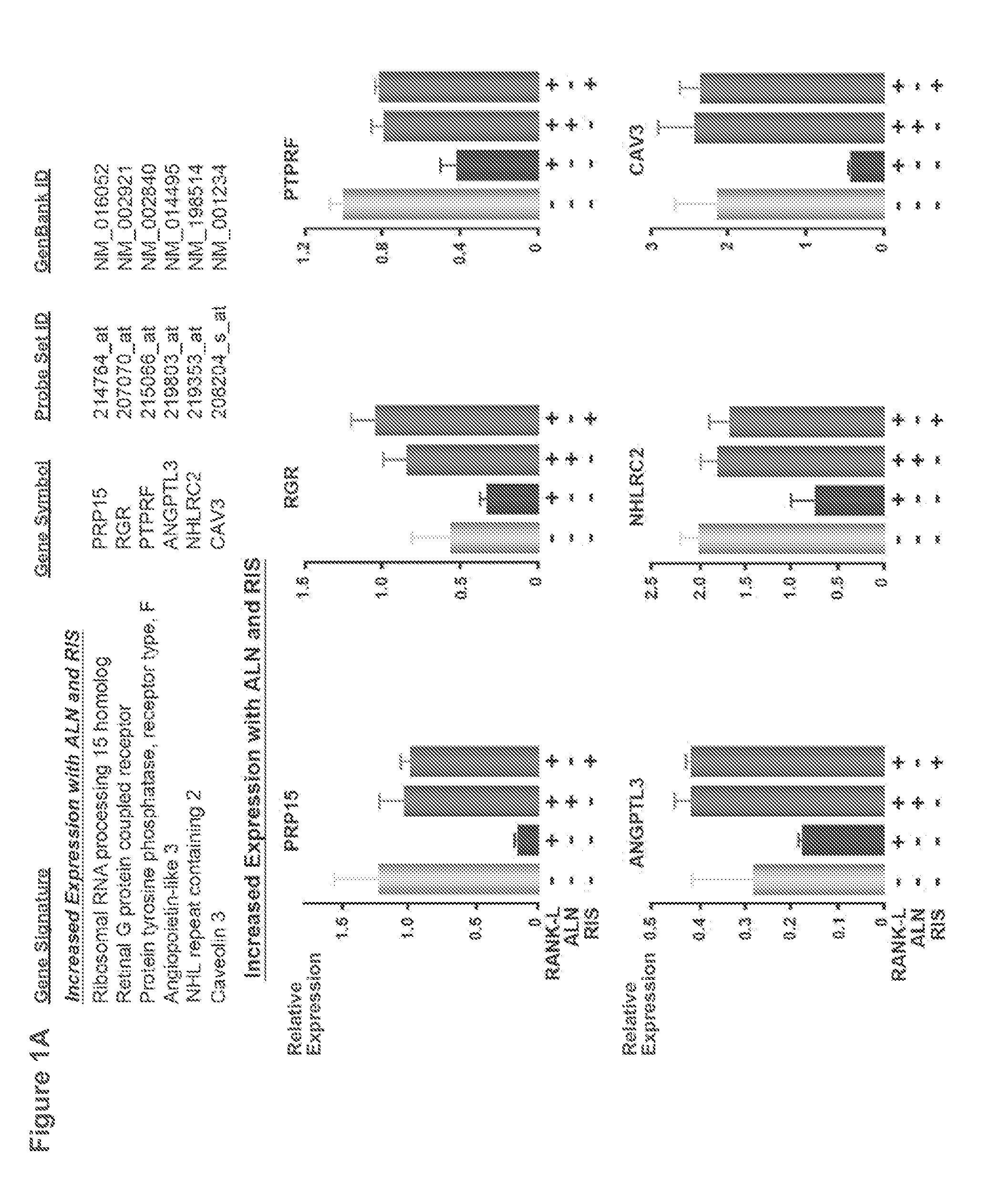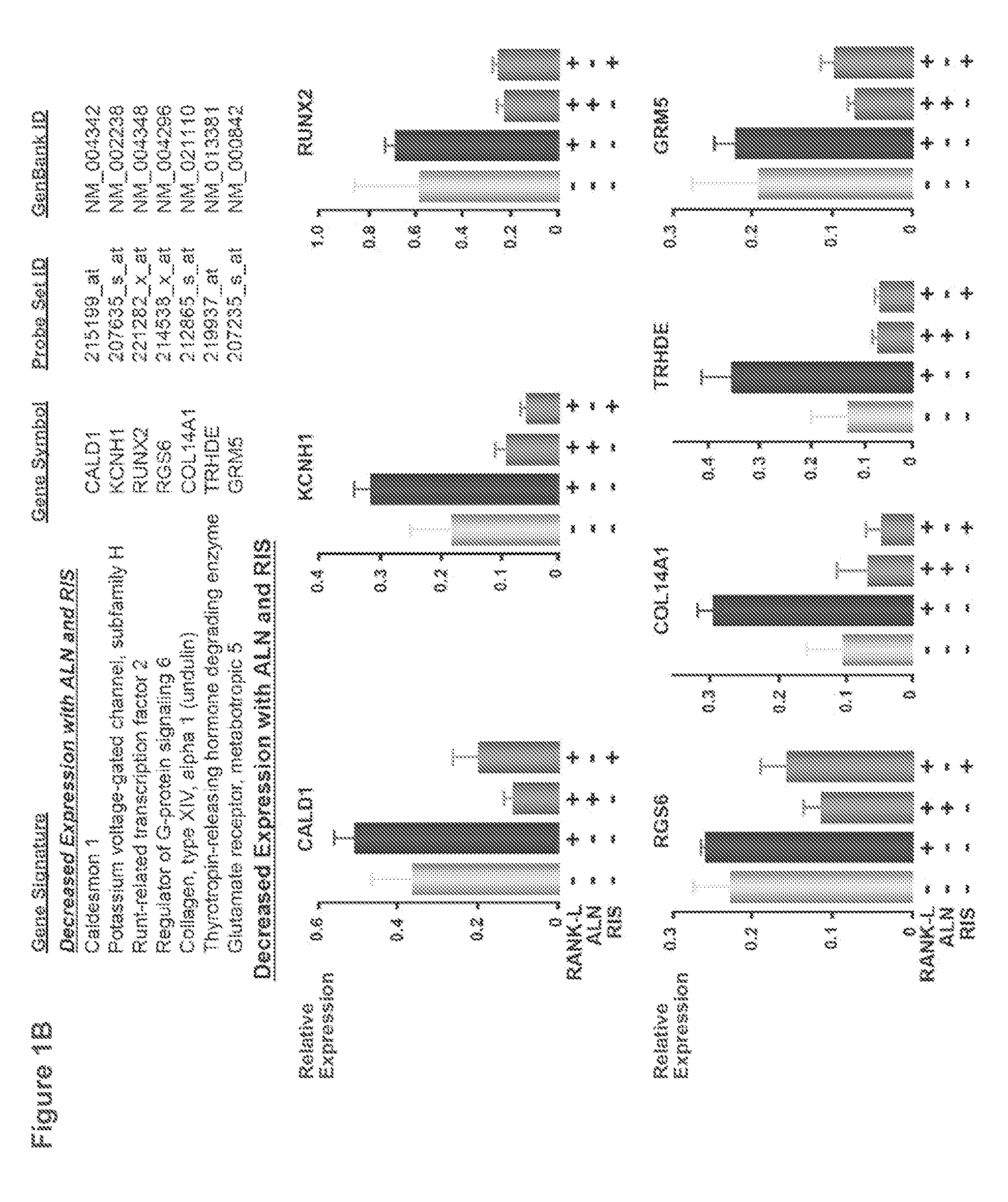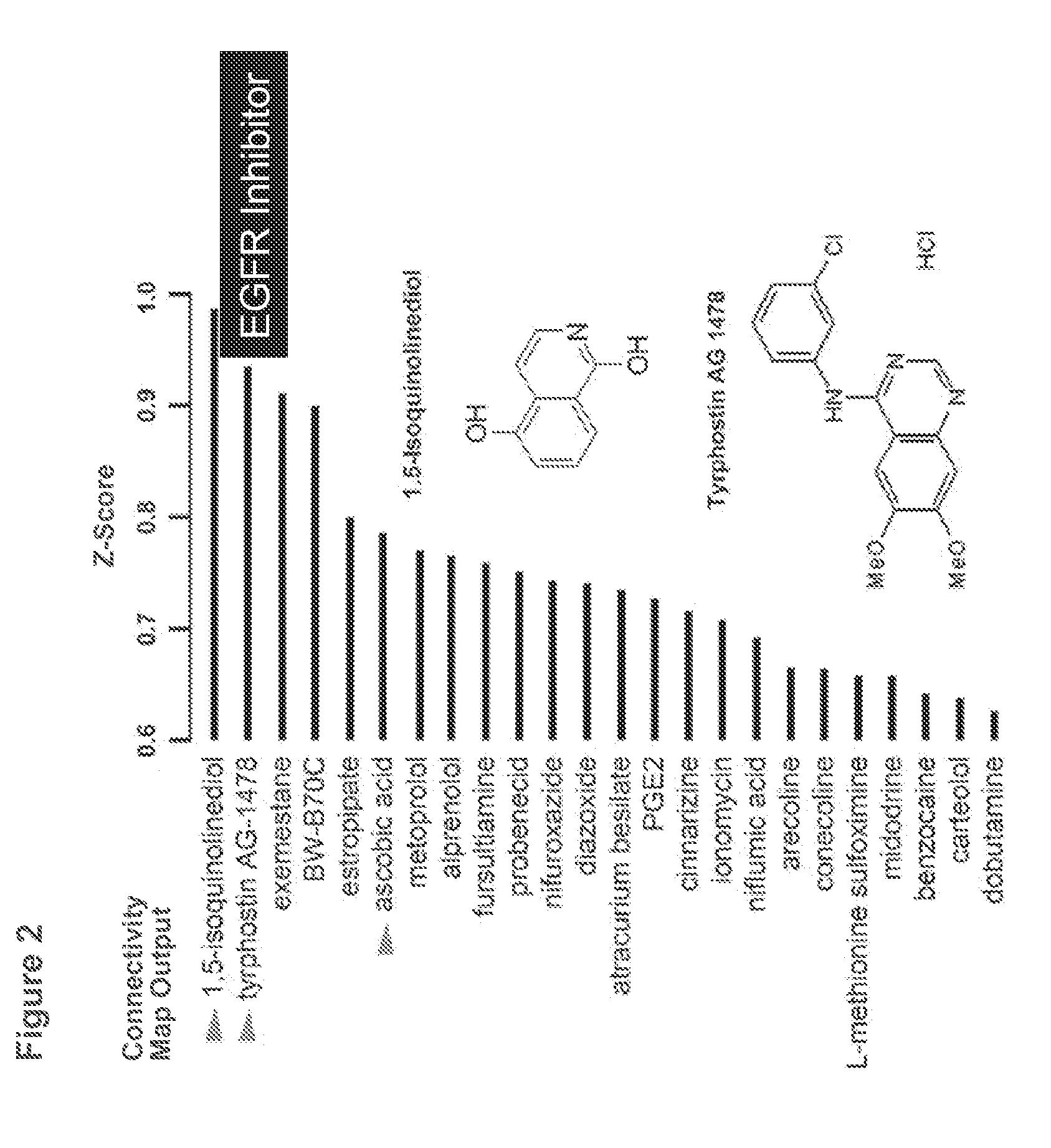Combination cancer therapy using bisphosphonates and Anti-egfr agents
- Summary
- Abstract
- Description
- Claims
- Application Information
AI Technical Summary
Benefits of technology
Problems solved by technology
Method used
Image
Examples
example 1
Connectivity Mapping Identifies the EGFR as a Bisphosphonate Target
[0084]To discover new mechanisms through which bisphosphonates might act, we interrogated the Connectivity Map (CMAP) (worldwide website at www.broad.mit.edu / cmap) using a novel bisphosphonate signature. The CMAP is a compendium of genome-wide gene expression data that allows functional connections between drugs, genes and diseases to be established. We cultured human osteoclasts derived from peripheral blood mononuclear cells (PBMC) obtained from three separate donors and exposed the cultures to vehicle, RANK-L (30 ng / ml), or RANK-L plus either alendronate or risedronate (10−8 M of either), two of the most commonly used bisphosphonates. Microarrays were performed on mRNA isolated from these cultured cells. We found that the expression of 486 genes was elevated by both bisphosphonates, while the expression of 176 genes was decreased by both bisphosphonates.
[0085]We then developed a bisphosphonate gene signature by id...
example 2
Bisphosphonates Directly Inhibit the EGFR
[0089]Most cellular actions of bisphosphonates have been shown to occur via alterations in the mevalonate pathway. We used a cell-free in vitro kinase assay using recombinant EGF receptor (EGFR) to determine whether bisphosphonates inhibit the EGFR directly or indirectly. To do so, we incubated the reconstituted, recombinant EGFR with alendronate (ALN) or risedronate (RIS) (100 μM) for 1 hour. A kinase reaction was stimulated with the addition of ATP, following which phosphorylation of the substrate poly(Gly,Tyr) was detected using a horseradish peroxidase (HRP)-conjugated anti-phosphotyrosine antibody. We found that both alendronate and risedronate directly inhibited EGFR kinase activity (FIG. 11). In parallel, a similar cell-free in vitro assay using recombinant EGFR was used to measure the phosphorylation of the EGFR following addition of ATP in the presence or absence of zoledronic acid (ZA, 100 μM). Western immunoblotting using antiphosp...
example 3
Bisphosphonates Selectively Kill EGFR-Positive Cancer Cells
[0093]Connectivity mapping, cell-free assays, and computational modeling together suggest that the EGFR is a target for bisphosphonate action. To validate this, we evaluated the cellular effects of bisphosphonates in EGFR-negative and EGFR-positive cancer cell lines. Mutated cancer cell lines, namely H520, H1666, H3255, HC827, A549, H1650, MCF-7, Caco-2, SW620, and SW480, were grown using standard protocols, and exposed to bisphosphonates. Thereafter, the cells were subject to the MTT assay to assess viability using a commercial kit. Additionally, in certain instances, annexin V staining was performed using a previously described protocol. Quantitative PCR (qPCR) for BCL, Bax, survivin, as well as for the thirteen bisphosphonate signature genes (FIG. 1) was carried out. Protein extracts were subject to SDS-PAGE followed by Western immunoblotting using antibodies to PARP, Akt (total and phosphorylated), Erk (total and phospho...
PUM
| Property | Measurement | Unit |
|---|---|---|
| Refractory | aaaaa | aaaaa |
| Catalyst | aaaaa | aaaaa |
Abstract
Description
Claims
Application Information
 Login to View More
Login to View More - R&D
- Intellectual Property
- Life Sciences
- Materials
- Tech Scout
- Unparalleled Data Quality
- Higher Quality Content
- 60% Fewer Hallucinations
Browse by: Latest US Patents, China's latest patents, Technical Efficacy Thesaurus, Application Domain, Technology Topic, Popular Technical Reports.
© 2025 PatSnap. All rights reserved.Legal|Privacy policy|Modern Slavery Act Transparency Statement|Sitemap|About US| Contact US: help@patsnap.com



